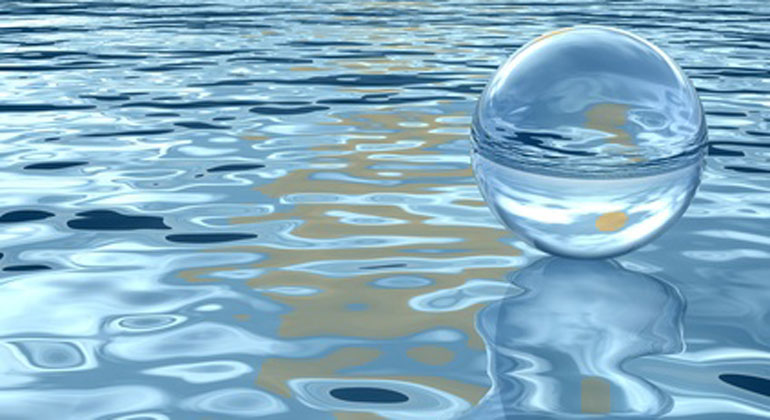Breakthrough in reverse osmosis may lead to most energy-efficient seawater desalination ever
Making fresh water out of seawater usually requires huge amounts of energy. The most widespread process for desalination is called reverse osmosis, which works by flowing seawater over a membrane at high pressure to remove the minerals.
Now, Purdue University engineers have developed a variant of the process called “batch reverse osmosis,” which promises better energy efficiency, longer-lasting equipment and the ability to process water of much higher salinity. It could end up a difference-maker in water security around the world.
Reverse osmosis is used in many countries; in arid places like the Middle East, more than half of the fresh drinking water supplies come from desalination facilities. But to maintain the high level of pressure required for the process – up to 70 times atmospheric pressure – a desalination plant must employ large numbers of pumps and other equipment. And that uses a lot of energy.

“About a third of the lifetime cost of a desalination plant is energy,” said David Warsinger, a Purdue assistant professor of mechanical engineering. “Even small improvements to the process – a few percentage points of difference – can save hundreds of millions of dollars and help to keep CO2 out of the atmosphere.”
During his doctoral work at MIT, Warsinger first developed the idea of “batch reverse osmosis.” Rather than keeping a constant flow of seawater at those high pressure levels, a batch process takes in a set quantity of water at one time; processes it; discharges it; and then repeats the process with the next batch.
“Each batch runs for about one to two minutes,” Warsinger said. “We ramp up the pressure over time, reduce the volume over time, and we end up using much less energy to produce the same amount of fresh water.”
Though some desalination plants have attempted to use semibatch techniques, none has ever implemented a full batch system – partly because of the time breaks between batches.
“It takes time and energy to pump each batch of water out, and then pump the next batch of water in for processing,” Warsinger said. “Expending that time and energy generally cancels out the efficiency gains you would get from using the batch process. That’s why we developed a solution called ‘double-acting batch reverse osmosis.’”
Double-duty piston
This new process uses a piston tank — a high-pressure vessel with a piston in the middle. While one side of the piston sends seawater forward into the processing loop, the other side of the piston simultaneously fills up with the next batch of seawater in the queue. When one batch process ends, the piston seamlessly injects the next batch of seawater into the system while simultaneously filling its other side with the next batch of seawater in the queue, and the process repeats continuously.
“Instead of fully emptying the piston each time or using some other liquid or gas to pressurize the piston, we’re filling it with the next batch of seawater,” Warsinger said. “So rather than one side of the piston being essentially dead space, we are using the seawater itself to get double-duty out of this piston, so there’s almost no downtime.
“According to our models, this proposed system offers the lowest energy consumption ever for seawater desalination. It’s a best-in-class milestone.”
Their research has been published in Desalination.
“Downtime is really something you want to avoid,” said Sandra Cordoba, a Purdue master’s student in mechanical engineering and first author of the paper. “If you have to service the system after every cycle, you lose all your energy efficiency. Reducing or eliminating that downtime is the key thing that makes batch reverse osmosis feasible.”
Cordoba also developed the theoretical hydraulic models used in the paper.
“Reverse osmosis is a complex process,” Cordoba said. “To gauge its success, you have to track many variables: water pressure, volume, salinity, recovery ratio, time and energy. With these models, we were able to determine the right amount of pressure over time to achieve the best results using the minimum amount of energy.”
How big is the piston tank? It depends on the size of the system.
“Reverse osmosis operates on a wide range of scales,” Warsinger said. “Households in India often have a micro reverse osmosis system for their own home, where you could hold it in your hands. For our experiments, we’ve built a model system where the piston tank is about the size of a fire extinguisher. In a full-scale plant, it could be a hundred feet long. But the beauty of it is that it’s not a complex piece of equipment; it’s essentially a pipe, with a water-tight piston in the middle. But that piston tank changes everything.”








